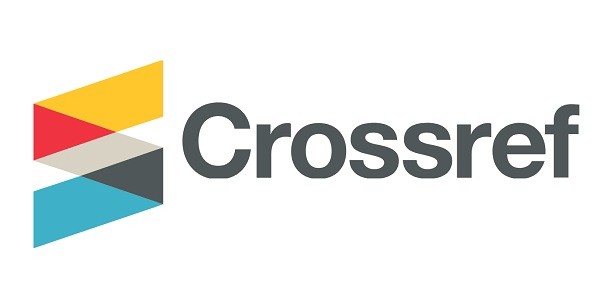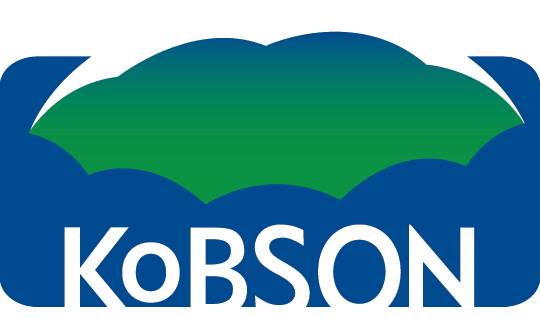DOI: 10.5937/jaes18-24730
This is an open access article distributed under the CC BY-NC-ND 4.0 terms and conditions.

Volume 18 article 677 pages: 198 - 206
Computer modeling of various technological processes, including soil treatment, has currently become an urgent
task. The purpose of the study is to make energy evaluation of the tilling implement working tool by modeling the
technological process with the use of discrete element methods and the method of computational fluid dynamics. The
obtained results were compared with the results of real experiments. The paper presents the results of the comparative
energy assessment of the cultivator's working tool. The results were obtained during real experiments conducted
in the tillage bin by modeling the soil treatment technological process with the use of discrete elements (DEM) and
computational fluid dynamics methods (CFD). To measure the working tool tractive resistance in the tillage bin an experimental
unit with strain indicators of 5000N rating value was created. The unit has the function of possible technological
and structural adjustments. Soil particles configurations were selected by modeling the technological process
with the use of the discrete elements method. Literature sources and data of various soil examinations were used to
determine physical and mechanical properties of soil. Such values as Poisson's ratio (V), static friction coefficient (f),
shear modulus (G), and Young’s modulus (E) were set. According to the results the values got using computational
fluid dynamics method are similar to the results of real experiments conducted in the tillage bin. When using discrete
element modeling the value of the instrument tractive resistance is close to real data at low operating speeds.
1. Bezverkhova, E.V., Russkiy, V.G. (2010). Resource- saving technologies as the basis for innovative development of crop production. Economy of Agricultural and Processing Enterprises, vol. 9, 45- 47. (in Russian)
2. Safin, H.M.(2019). Prospects of introduction of notill and strip-till saving technologies in the Republic of Bashkortostan. Rural Patterns,vol. 2, 26-27. (in Russian)
3. Ahmad, F., Weimin, D., Qishud, D., Huimin, F., Hassan, M. (2015). 3-D DEM modeling of single disc furrow opener draft force in no-till paddy soil. International Agricultural Engineering Journal, vol. 24, no. 2, 17-29.
4. Rakhimov, Z., Mudarisov, S., Gabitov, I., Rakhimov, I., Rakhimov, R., Farkhutdinov, I., Tanylbaev, M., Valiullin, I., Iamaletdinov, M., Aminov, R. (2018). Mathematical description of the mechanical erosion process in sloping fields. Journal of Engineering and Applied Sciences,vol. 13, no. 8, 6505-6511. DOI:10.36478/jeasci.2018.6505.6511
5. Gabitov, I., Mudarisov, S., Gafurov, I., Ableeva, A., Negovora, A., Davletshin, M., Rakhimov, Z., Khamaletdinov, R., Martynov, V., Yukhin, G.(2018). Evaluation of the efficiency of mechanized technological processes of agricultural production. Journal of Engineering and Applied Sciences,vol. 13,no. 10, 8338- 8345.DOI:10.3923/jeasci.2018.8338.8345
6. Dzyuba, O., Dzyuba, A., Polyakov, A., Volokh, V., Antoshchenkov, R., Mykhailov, A. (2019). Studying the influence of structural-mode parameters on energy efficiency of the plough PLN-3-35. Eastern-European Journal of Enterprise Technologies,vol. 3, no. 1, 55-65.DOI:10.15587/1729-4061.2019.169903
7. Tesliuk, H., Volik, B., Sokol, S., Ponomarenko, N. (2019). Design of working bodies for tillage tools using the methods of bionics. Eastern-European Journal of Enterprise Technologies,vol. 3, no. 1, 49-54. DOI:10.15587/1729-4061.2019.169156
8. Karmakar, S., Kushwaha, R.L. (2005). Simulation of soil deformation around a tillage tool using computational fl uid dynamics. Transactions of the ASAE,vol. 48, 923-932.DOI:10.13031/2013.17051
9. Mudarisov, S.G.(2005). Modeling the process of interaction of working bodies with the soil. Tractors and Agricultural Machine,vol. 7, 27-30. (in Russian)
10. Bartzanas, T., Kacira, M., Zhu, H., Karmakar, S., Tamimi, E., Katsoulas, N., Lee I.B., Kittas, C. (2013). Computational fluid dynamics applications to improve crop production systems. Computers and Electronics in Agriculture,vol. 93, 151-167.DOI:10.1016/j. compag.2012.05.012
11. Zhu, L., Ge, J.R., Cheng, X., Peng, S.S., Qi, Y.Y., Zhang, W.F., Zhu, D.Q. (2017). Modeling of share/ soil interaction of a horizontally reversible plow using computational fl uid dynamics. Journal of Terramechanics,vol. 72, 1-8.DOI:10.1016/j.jterra. 2017.02.004
12. Coetzee, C.J., Els, D.N.J.(2009). Calibration of granular material parameters for DEM modelling and numerical verification by blade-granular material interaction. Journal of Terramechanics,vol. 46, 15-26. DOI:10.1016/j.jterra.2008.12.004
13. Shmulevich, I.(2010). State of the art modeling of soil–tillage interaction using discrete element method. Soil & Tillage Research,vol. 111, 41-53. DOI:10.1016/j.still.2010.08.003
14. Mak, J., Chen, Y., Sadek, M.A. (2012). Determining parameters of a discrete element model for soil-tool interaction. Soil & Tillage Research,vol. 118, 117- 122.DOI:10.1016/j.still.2011.10.019
15. Peng, C., Zhou, M., Wu, W. (2015). Large deformation modeling of soil-machine interaction in clay. In: Papamichos, E., Papanastasiou, P., Pasternak, E., Dyskin, A. (Eds.), Bifurcation and degradation of geomaterials with engineering applications. Proceedings of the 11th International workshop on bifurcation and degradation in geomaterials dedicated to Hans Muhlhaus. Limassol, Cyprus, 21-25 May 2017, p. 249-257.DOI:10.1007/978-3-319-56397-8_32
16. Ucgul, M., Fielke, J.M., Saunders, C. (2015). Three-dimensional discrete element modelling (DEM) of tillage: Accounting for soil cohesion and adhesion. Biosystems Engineering,vol. 169, 298- 306.DOI:10.1016/j.biosystemseng.2014.11.006
17. Ucgul, M., Saunders, C., Fielke, J.M. (2017). Discrete element modelling of top soil burial using a full scalemouldboard ploughunder field conditions. Biosystems Engineering,vol. 160, 140-153.DOI:10.1016/j. biosystemseng.2016.12.002
18. Shahgholi, G., Kanyawi, N., Kalantari, D.(2015). Modeling the effects of narrow blade geometry on soil failure draught and vertical forces using discrete element method. Yuzuncu Yil University Journal of Agricultural Sciences,vol. 29, 24-33.DOI:10.29133/ yyutbd.429950
19. Fleischmann, J., Serban, R., Negrut, D. (2016). On the importance of displacement history in softbody contact models. Journal of Computational and Nonlinear Dynamics,vol. 11, no.4, 044502. DOI:10.1115/1.4031197
20. Milkevych, V., Munkholm, L.J., Chenc, Y., Nyord, T. (2018). Modelling approach for soil displacement in tillage using discrete element method. Soil & Tillage Research,vol. 183, 60-71.DOI:10.1016/j. still.2018.05.017
21. Sun, J., Wang, Y., Ma, Y., Tong, J., Zhang, Z. (2018). DEM simulation of bionic subsoilers (tillage depth >40 cm) with drag reduction and lower soil disturbance characteristics. Advances in Engineering Softwate,vol. 119, 30-37.DOI:10.1016/j.advengsoft. 2018.02.001
22. Tamas, K.(2018). The role of bond and damping in the discrete element model of soil-sweep interaction. Biosystems Engineering,vol. 169, 57-70. DOI:10.1016/j.biosystemseng.2018.02.001
23. Ucgul, M., Saunders, C., Fielke, J.M.(2018). Comparison of the discrete element and finite element methods to model the interaction of soil and tool cutting edge. Biosystems Engineering,vol. 169, 199- 208.DOI:10.1016/j.biosystemseng.2018.03.003
24. Barr, J.B., Ucgul, M., Desbiolles, J.M.A., Fielke, J.M. (2018). Simulating the effect of rake angle on narrow opener performance with the discrete element method. Biosystems Engineering,vol. 171, 1-15. DOI:10.1016/j.biosystemseng.2018.04.013
25. Zeng, Z., Chen, Y. (2019). Simulation of straw movement by discrete element modelling of straw-sweepsoil interaction. Biosystems Engineering,vol. 180, 25-35.DOI:10.1016/j.biosystemseng.2019.01.009
26. Mudarisov, S.G., Rakhimov, Z.S., Iamaletdinov, M.M., Farkhutdinov, I.M. (2010). Estimation of technological process of soil tillage based on contonuous media dynamics equation. Achievements of Science and Technology of Agribusiness,vol. 1, 63-65. (in Russian)
27. Mudarisov, S.G., Gabitov, I.I., Lobachevsky, Y.P., Mazitov, N.K., Rakhimov, R.S., Khamaletdinov, R.R., Rakhimov, I.R., Farkhutdinov, I.M., Mukhametdinov, A.M., Gareev, R.T.(2019). Modeling the technological process of tillage. Soil & Tillage Research,vol. 190, 70-77.DOI:10.1016/j.still.2018.12.004
28. Bravo, E.L., Tijskens, E., Suаrez, M.H., Cueto, O.G., Ramon, H. (2014). Prediction model for non-inversion soil tillage implemented on discrete element method. Computers and Electronics in Agriculture, vol. 106, 120-127.DOI:10.1016/j.compag.2014.05.007
29. Zeng, Z., Chen, Y., Zhang, X.(2017). Modelling the interaction of a deep tillage tool with heterogeneous soil. Computers and Electronics in Agriculture,vol. 143, 130-138.DOI:10.1016/j.compag.2017.10.005
30. Tekeste, M.Z., Balvanz, L.R., Hatfi eld, J.L., Ghorbani, S. (2019). Discrete element modeling of cultivator sweep-to-soil interaction: Worn and hardened edges effects on soil-tool forces and soil fl ow. Journal of Terramechanics,vol. 82, 1-11.DOI:10.1016/j.jterra. 2018.11.001
31. Karmakar, S., Ashrafi zadeh, S.R., Kushwaha, R.L.(2009). Experimental validation of computational fluid dynamics modeling for narrow tillage tool draft. Journal of Terramechanics,vol. 46, 277-283. DOI:10.1016/j.jterra.2009.06.001
32. Ani, O.A., Uzoejinwa, B.B., Ezeama, A.O., Onwualu, A.P., Ugwu, S.N., Ohagwu, C.J. (2018). Overview of soil-machine interaction studies in soil bins. Soil & Tillage Research,vol. 175, 13-27.DOI:10.1016/j. still.2017.08.002







